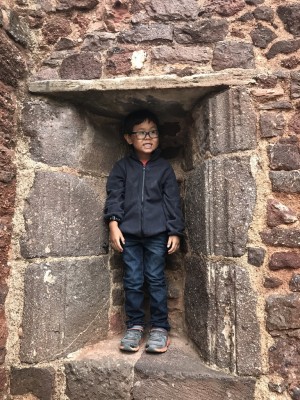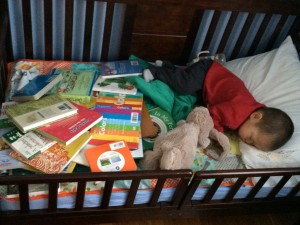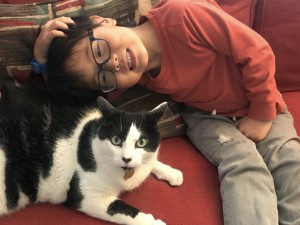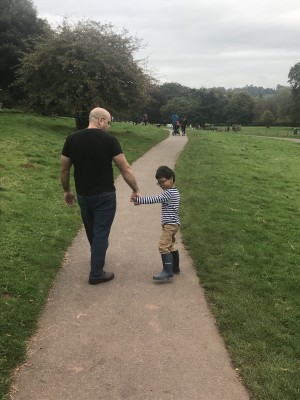A Look at Our Evolving Understanding of Adoptive Parenting
Growing up I loved the movie, Annie. I mean LOVED it. My family still groans at the memory of the “summer of Annie.” Clad in my romper, I would carry around our family’s cassette player listening to the soundtrack on repeat. “The sun’ll come out tomorrow!” I belted at the top of my 7-year-old lungs. Annie had spunk. Annie could dance. Annie could put a smile on anyone’s face. And once little orphan Annie moved into the palace with Daddy Warbucks, all her dreams would come true. Now, I think about what I know about adoptive parenting.
 As an adoptive parent, I cringe slightly at the memory of Annie. But the 1982 film serves as a symbol of our evolving understanding of adoption and adoptive parenting. In her book, Kinship by Design, Ellen Herman traces the history of adoption in the United States. Parents who adopted children from the 1930s (Annie’s time) through the 1980s did so in a world where it was important to keep their children’s adoption a “secret.” No one spoke openly about birth families. No one considered the child’s experiences up to placement. It was thought that for a child to feel safe and secure, all ties to the birth family and/or the child’s country of origin must be severed. Such ties would make the adoptee sad and adoption was viewed as a source of joy. A family wanted a baby, a baby needs a home, the family welcomes the baby with open arms and all live happily ever after.
As an adoptive parent, I cringe slightly at the memory of Annie. But the 1982 film serves as a symbol of our evolving understanding of adoption and adoptive parenting. In her book, Kinship by Design, Ellen Herman traces the history of adoption in the United States. Parents who adopted children from the 1930s (Annie’s time) through the 1980s did so in a world where it was important to keep their children’s adoption a “secret.” No one spoke openly about birth families. No one considered the child’s experiences up to placement. It was thought that for a child to feel safe and secure, all ties to the birth family and/or the child’s country of origin must be severed. Such ties would make the adoptee sad and adoption was viewed as a source of joy. A family wanted a baby, a baby needs a home, the family welcomes the baby with open arms and all live happily ever after.
Except for many families, this was not the case.
 In the 1990s two things occurred that began to shape our understanding of adoptive parenting. From 1971-2001 Asian adoptees became the largest intercountry adoption community in the United States. As those children grew into adults they began to give voice to their experiences as children. They spoke of a powerful sense of isolation and a loss of identity. In trying to “assimilate” their adoptive children, parents had effectively erased their children’s pasts. At the same time, the Cold War was ending and many Eastern European orphanages were opening. These openings provided access to researchers who began to study the effects of early trauma on infants and toddlers.
In the 1990s two things occurred that began to shape our understanding of adoptive parenting. From 1971-2001 Asian adoptees became the largest intercountry adoption community in the United States. As those children grew into adults they began to give voice to their experiences as children. They spoke of a powerful sense of isolation and a loss of identity. In trying to “assimilate” their adoptive children, parents had effectively erased their children’s pasts. At the same time, the Cold War was ending and many Eastern European orphanages were opening. These openings provided access to researchers who began to study the effects of early trauma on infants and toddlers.
What they found was that though children are resilient, early childhood trauma can have lasting effects. In 1993, Nancy Verrier, in her book by the same title, referred to this loss as a “primal wound.” Verrier proposed that postnatal separation from the biological mother hurts the physiology of the brain. Thinking in more basic terms, children separated from their biological mothers are forced into a fight or flight mentality from birth. If they have been abandoned or placed into institutional care, the trauma is felt more acutely. Even once children are adopted, that fight or flight sensation is still maintained in both the brain and body. It becomes like muscle memory. Think if you accidentally touched a hot stove and burned yourself. The next time you walked by that same stove, your brain will not let you forget the scary occurrence that led to your burning your hand. Children who have experienced early trauma are the same way.
 We were home just over two months when we experienced one of my son’s trauma triggers. He was happily playing blocks on the floor and our cat, Tonto, began to claw at the couch. I shouted at the cat to stop, and when he did not, I raised my voice more. My son burst into tears and started shaking uncontrollably. I had no idea what was going on but rushed over to my son to comfort him. In raising my voice – though clearly directed at the cat – I had triggered something in my son. I repeated, again and again, I was not mad at him but rather at the cat, but it was a teachable moment. We learned we can’t raise our voices in our house and now have a spray bottle of water handy for our feline friend’s misbehaviors.
We were home just over two months when we experienced one of my son’s trauma triggers. He was happily playing blocks on the floor and our cat, Tonto, began to claw at the couch. I shouted at the cat to stop, and when he did not, I raised my voice more. My son burst into tears and started shaking uncontrollably. I had no idea what was going on but rushed over to my son to comfort him. In raising my voice – though clearly directed at the cat – I had triggered something in my son. I repeated, again and again, I was not mad at him but rather at the cat, but it was a teachable moment. We learned we can’t raise our voices in our house and now have a spray bottle of water handy for our feline friend’s misbehaviors.
This is just one example of the many ways early childhood trauma still manifests itself in our son. Thanks to the research of professionals in the last 30 years, we know this trauma does not go away. As Dr. Christopher Alexander relays in The Inner World of the Adopted Child, “What we fail to sometimes take into account—and what many agencies don’t adequately prepare parents for—is how adopted children manifest with a variety of psychological characteristics that differ tremendously from other children.” Adoption parenting is inherently different. It has to be. As Child Welfare recommends, “Parenting a child who has experienced trauma may require a shift from seeing a ‘bad kid’ to a kid who has had bad things happen to him.” Kids who have experienced trauma have big emotions, and they don’t always know what to do with them or how to handle them.
 So what can we as adoptive parents do in our adoptive parenting? We can create a life book and record as much information about our children’s birth stories as we can. As they get older, this book can transform into a co-constructed narrative. We can be there to listen when they want to talk and find ways to bring up the conversation in little everyday ways. If you can, surround your child with other adoptees so they have someone with whom they might share their experiences. Facebook and other social networks are a great way to meet people, and your local agency might know of neighborhood families as well. And if you need it, please seek help. Become trauma-informed and know there is a community of professionals waiting to help if the time comes. But above all, remember, unlike orphan Annie’s story, the adoption journey does not end at placement, it begins.
So what can we as adoptive parents do in our adoptive parenting? We can create a life book and record as much information about our children’s birth stories as we can. As they get older, this book can transform into a co-constructed narrative. We can be there to listen when they want to talk and find ways to bring up the conversation in little everyday ways. If you can, surround your child with other adoptees so they have someone with whom they might share their experiences. Facebook and other social networks are a great way to meet people, and your local agency might know of neighborhood families as well. And if you need it, please seek help. Become trauma-informed and know there is a community of professionals waiting to help if the time comes. But above all, remember, unlike orphan Annie’s story, the adoption journey does not end at placement, it begins.
Do you feel there is a hole in your heart that can only be filled by a child? We’ve helped complete 32,000+ adoptions. We would love to help you through your adoption journey. Visit Adoption.org or call 1-800-ADOPT-98.






